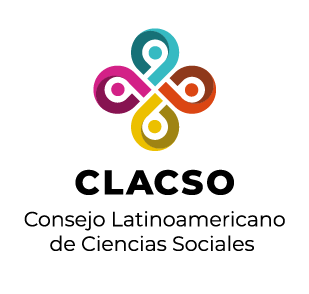Red de Bibliotecas Virtuales de Ciencias Sociales en
América Latina y el Caribe

Por favor, use este identificador para citar o enlazar este ítem:
https://biblioteca-repositorio.clacso.edu.ar/handle/CLACSO/255700Registro completo de metadatos
| Campo DC | Valor | Lengua/Idioma |
|---|---|---|
| dc.creator | Samper Kutschbach, Mario | - |
| dc.date | 2021-08-18T17:54:42Z | - |
| dc.date | 2021-08-18T17:54:42Z | - |
| dc.date | 2017-08-24 | - |
| dc.date.accessioned | 2025-09-17T02:13:18Z | - |
| dc.date.available | 2025-09-17T02:13:18Z | - |
| dc.identifier | 1012-9790 | - |
| dc.identifier | https://www.revistas.una.ac.cr/index.php/historia/article/view/10052 | - |
| dc.identifier | http://hdl.handle.net/11056/20847 | - |
| dc.identifier.uri | https://biblioteca-repositorio.clacso.edu.ar/handle/CLACSO/255700 | - |
| dc.description | La autora recorre la evolución de los mercados del café costarricense y de la cadena de producción primaria y acopio, transformación y transporte interno, exportación, transporte y comercialización ultramarina, torrefacción, distribución y consumo del estimulante y apetecido grano de la fruta del cafeto en Alemania. De manera que, aborda la inserción de los inmigrantes alemanes en la caficultura y en otras actividades económicas, desde el siglo XIX hasta principios del XX y el trastorno en los negocios cafetaleros e intereses alemanes durante la Primera Guerra Mundial y el gobierno de los Tinoco, reconstruye los cambios en los mercados, en la cadena de producción y comercialización del café y en la organización nacional del sector cafetalero, estudia el resurgimiento del empresariado alemán en el país después de la Primera Guerra Mundial, prosigue con una discusión histórica de las relaciones diplomáticas y comerciales entre Costa Rica y Alemania y concluye con la consolidación del capital alemán en el negocio del café en Costa Rica hacia finales de ese período. | - |
| dc.description | The author traces the evolution of the Costa Rican coffee markets and the chain of primary production and stockpiling, transformation and internal transport, export, overseas transport and commercialization, roasting, distribution and consumption of the stimulating and sought-after coffee bean in Germany. Thus, she addresses the insertion of German immigrants in coffee growing and other economic activities from the XIX century to the beginning of the XX century and the upheaval in the coffee business and German interests during the First World War and the Tinoco government, reconstructs the changes in the markets, in the coffee production and commercialization chain and in the national organization of the coffee sector, studies the resurgence of German entrepreneurship in the country after the First World War, continues with a historical discussion of the diplomatic and commercial relations between Costa Rica and Germany and concludes with the consolidation of German capital in the coffee business in Costa Rica towards the end of that period. | - |
| dc.description | Universidad Nacional, Costa Rica | - |
| dc.description | Escuela de Historia | - |
| dc.format | application/pdf | - |
| dc.language | spa | - |
| dc.publisher | Universidad Nacional, Costa Rica | - |
| dc.rights | Acceso abierto | - |
| dc.rights | http://creativecommons.org/licenses/by-nc-sa/4.0/ | - |
| dc.source | Revista de Historia no.76 julio-diciembre 141-143 2017 | - |
| dc.subject | COSTA RICA | - |
| dc.subject | CAFÉ | - |
| dc.subject | GEOPOLÍTICA | - |
| dc.subject | COMERCIALIZACIÓN | - |
| dc.subject | MERCADO INTERNACIONAL | - |
| dc.subject | COFFEE | - |
| dc.subject | GEOPOLITICS | - |
| dc.subject | COMMERCIALIZATION | - |
| dc.subject | INTERNATIONAL MARKET | - |
| dc.title | Reseña del libro El negocio del café de Costa Rica, el capital alemán y la geopolítica (1907-1936), de Gertrud Peters Solórzano | - |
| dc.type | http://purl.org/coar/resource_type/c_ba08 | - |
| Aparece en las colecciones: | Facultad de Ciencias Sociales - UNA - Cosecha | |
Ficheros en este ítem:
No hay ficheros asociados a este ítem.
Los ítems de DSpace están protegidos por copyright, con todos los derechos reservados, a menos que se indique lo contrario.